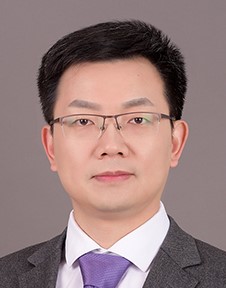Recently, Professor Huang YongAn’s team from School of Mechanical Science & Engineering of HUST published a review titled “Flexible Metamaterial Electronics” in an internationally recognized journal Advanced Materials (Impact Factor of 30.849). A groundbreaking interdisciplinary field that combines metamaterials and flexible electronics is first coined as ‘flexible metamaterial electronics’, focusing on novel flexible electronics with enhancing and innovating functionalities stemming from the conceptual breakthrough of metamaterials. The latest progress, challenges and opportunities in this infant field are summarized to advance this cutting-edge field.
Flexible electronics that break through the bottleneck and monopoly of traditional silicon-based IC electronics have aroused extensive interest in the research community and become one of the greatest concerned, cutting-edge interdisciplines. Broad innovative applications include wearable electronics, epidermal electronics, implantable electronics, soft robotics, aircraft smart skin, and so on. Over the last two decades, great progress on advanced soft materials and structural designs has been achieved to enable flexible electronics. While the development of intrinsically flexible and stretchable functional materials provides an intuitive answer for the mechanical deformation (e.g., stretching and conforming) issues, applications of such materials are still limited for lack of stability and reliability. Structural engineering like representative ‘island-bridge’ strategy has demonstrated its advances in a broad range of innovative applications, but the sophisticated, thin, and tenuous interconnects are approaching their physical limits. In other words, it is becoming increasingly challenging and high-cost to further improve or enhance the capability of flexible electronics by using routine strategies in either material or structural regimes.
“Meta” is a Greek word that means “beyond”. Metamaterials, exhibiting unprecedented physical (optical, acoustic, mechanical, thermal, electronic, etc.) properties that are unavailable in natural or chemically synthesized materials, have emerged as a revolutionary frontier of physics, chemistry, material science and engineering. The most salient trait of metamaterials lies in the artificial creation, namely the collective properties root in engineering structures (shape, geometry, and arrangement) of the unit cells rather than the intrinsic properties of the constituents. Therefore, metamaterials open a brand-new direction to design the capability of materials at will. According to the physics of supernatural properties, we classify metamaterials mainly into two categories: wave-based metamaterials (WMs) and mechanical metamaterials (MMs). The former includes electromagnetic metamaterials (or Photonic crystals, PtCs), acoustic metamaterials (or Sonic crystals, SnCs), and elastic metamaterials (or Phononic crystals, PnCs), manipulating the propagation of electromagnetic, acoustic, and elastic waves. The latter is associated with the elastic constants (Poisson’s ratio and moduli), focusing on stiffness, deformability and morphability, e.g., Kirigami MMs (Kiri-MMs), Origami MMs (Ori-MMs), Pentamode Metamaterials (PMs), Topological MMs (TMMs). In virtue of the intriguing supernatural properties, metamaterials have shown many innovative applications such as electromagnetic cloaking, acoustic superlens, programming soft robots, as well as high-performance flexible electronics.
Due to the promising prospects, the introduction of metamaterials into flexible electronics has been widely reported to enhance and innovate physical functionalities. Many impressive achievements in this infant field are emerging, for example, auxetic MMs-based artificial skin and sensitivity enhancement of stretchable strain sensors, Kiri-MMs-based curvy, shape-adaptive imagers, Ori-MMs-based hemispherical electronic eye systems, flexible PtCs-based skins, and metasurface-based cloaking skin. However, a state-of-the-art review from a systematic perspective, together with deep insights of underlying guides, is urgently needed to highlight this cutting-edge field. Here, such a groundbreaking interdisciplinary field is first coined as “flexible metamaterial electronics” (FMEs). Typologically, FMEs can be further divided into flexible mechanical metamaterial electronics (FMMEs) and flexible wave-based metamaterial electronics (FWMEs). Moreover, flexible active metamaterial electronics (FAMEs) are discussed separately in the perspective of material science since they enable an additional dimension of probability.
As a highly synthetic interdiscipline, FMEs show inborn complexity and diversity, which puts forward higher requirements for the cognitive depth and breadth of researchers. One should simultaneously know what the metamaterials can provide and what the flexible electronics need, and then build the appropriate supply-demand bridge. However, different disciplines inevitably display divergent tendentiousness. The study of metamaterials is inclined to explore novel physical phenomena and delved into underlying mechanisms, whereas the researchers in flexible electronics focus more on various characterization and practical functionalities. A simple borrowlism may be useful for some explicit cases like Kiri-MMs-based auxetic stretchability, but further integration and more implicit cases need in-depth understanding on both sides. The already reported FMEs are just the tip of the iceberg, great potential in this emerging field is waiting to be realized. Conceptual breakthroughs, multidisciplinary researches and demand-driven innovative applications will be crucial for the future work.
(Article Link: https://onlinelibrary.wiley.com/doi/abs/10.1002/adma.202200070)

Figure 1. Basis, classification and application of flexible metamaterial electronics.
Author Biography:

Huang YongAn, professor of Huazhong University of Science and Technology (HUST), vice director of State Key Laboratory of Digital Manufacturing Equipment and Technology, a winner of The National Science Fund for Distinguished Young Scholars, and a winner of Tencent “THE XPLORER PRIZE”. His research interests include design and manufacturing for flexible electronics, curved electronics, printed display, and metamaterials. Up to now, he has published more than 100 papers in journals including Science Advances, Advanced Materials, Advanced Functional Materials, Materials Horizon, Nano Energy, Nature Communications, etc., and also published 4 monographs. He has won the first prize of Natural Science in Hubei Province, Gold/Special Gold Award on International Exhibition of Inventions in Geneva, Switzerland.
Source: School of Mechanical Science and Engineering
Written by: Jiang Shan
Edited by: Yang Yi, Jiang Jing
